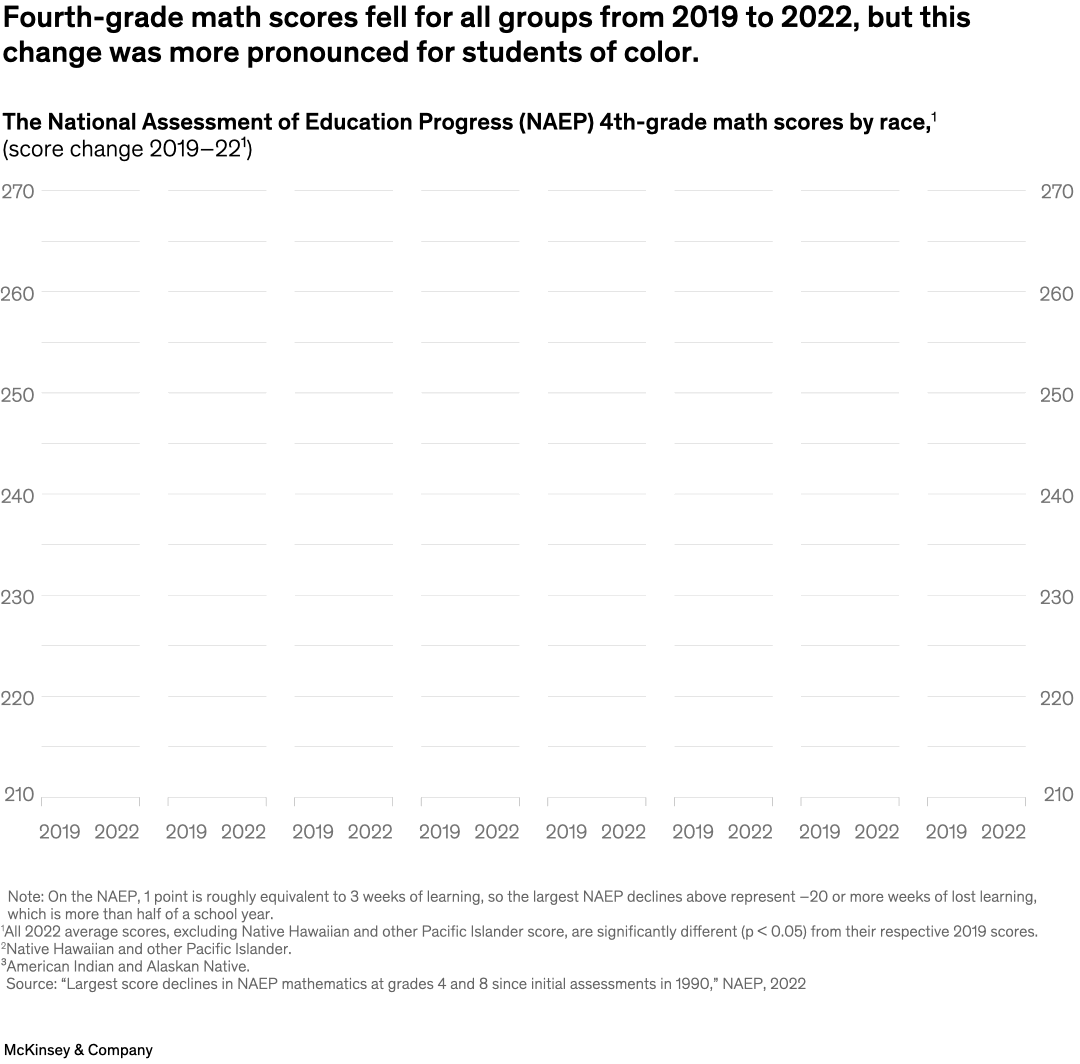Through the 1970s and ’80s, racial inequities in academic outcomes were diminishing, but meaningful progress for students of color has stalled. The COVID-19 pandemic wiped out two decades’ worth of math and reading progress for US fourth and eighth graders, exacerbating existing disparities. Partners Jake Bryant and Duwain Pinder and colleagues show that Black fourth-graders recorded a seven-point decline in math test scores, compared with a three-point drop for White students.

Image description:
Eight line graphs show NAEP 4th-grade math scores by race, using data from 2019 and 2022.
The data, rendered from highest-scoring race to lowest, show scores have dropped by different point amounts across all races, in this order: Black and Hispanic students dropped by 7 points; American Indian and Alaskan Native students by 6; 2 or more races and average, all students, by 5 points; Asian students by 4 points; White students by 3 points; and Native Hawaiian and other Pacific Islander by 2 points.
Note: On the NAEP, 1 point is roughly equivalent to 3 weeks of learning, so the largest NAEP declines above represent –20 or more weeks of lost learning, which is more than half of a school year.
Footnote 1: All 2022 average scores, excluding Native Hawaiian and other Pacific Islander score, are significantly different (p < 0.05) from their respective 2019 scores.
Footnote 2: Native Hawaiian and other Pacifi¬c Islander. Footnote 3: American Indian and Alaskan Native.
Source: “Largest score declines in NAEP mathematics at grades 4 and 8 since initial assessments in 1990,” NAEP, 2022
End of image description.
To read the article, see “Advancing racial equality in US pre-K-12 education,” July 21, 2023.